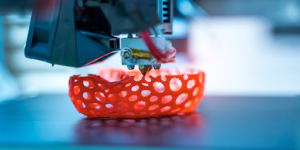The architectural landscape is undergoing a huge change called 3D Printing in Architecture. This change is defined by a confluence of technological advancements, evolving client expectations, and a growing emphasis on sustainability.
The modern architect is challenged to navigate a dynamic environment. While creativity remains paramount, the ability to translate visionary concepts into tangible realities within compressed timelines and budgetary constraints is equally crucial.
We are covering the following topics in the blog below:
Index:
- The Evolving Landscape of Architectural Design
- Challenges Faced by Modern Architects
- 3D Printing: A Revolutionary Tool for Architects
- How Does 3D Printing Work?
- The Advantages of 3D Printing for Architectural Prototyping
- Material Considerations for Architectural 3D Printing
- 3D Printing for Every Stage of the Architectural Workflow
- Security and Confidentiality: Protecting Your Intellectual Property
- Alt Innovate: Your Trusted Partner in 3D Printing for Architecture
Share
The Evolving Landscape of Architectural Design
Gone are the days of static blueprints and laborious physical models. Today’s architects operate in a collaborative ecosystem, leveraging cutting-edge 3D modeling software. This helps them to craft intricate designs into their 3D architectural model. Printing architectural 3D models helps foster open communication with clients and stakeholders.
However, translating these digital creations into physical prototypes for evaluation and feedback has traditionally been a bottleneck. But in this new age, from avant-garde skyscrapers to bespoke residential projects, the architectural landscape is evolving to embrace the limitless possibilities of 3D-printed architecture prototypes.
Partner with a Reliable & Experienced 3D Printing Service Company for Your Prototype
Rapid Prototyping for your next Architectural Project. Leverage the power of 3D Printing in Architecture. Lets create your 3D Architectural Model that impresses your client.
Challenges Faced by Modern Architects: Balancing Creativity with Practicality
Several hurdles can impede the architectural design process:
- Time Constraints: Meeting tight deadlines in a competitive industry can be a constant struggle. Traditional prototyping methods, often time-consuming and labor-intensive, can significantly impact project timelines.
- Communication Gaps: Effectively conveying the nuances of a design concept through 2D drawings can be challenging. Misinterpretations and revisions can lead to delays and client dissatisfaction.
- The High Cost of Traditional Prototyping: Conventional prototyping methods, such as hand-crafted models or CNC machining, can be expensive, particularly for complex designs with intricate details. This can limit design exploration and innovation for architects working with budgetary restrictions.
- Environmental Impact: Traditional prototyping often generates significant waste material, raising concerns about sustainability and responsible design practices.
These challenges highlight the limitations of traditional prototyping methods. The need for a more efficient, cost-effective, and environmentally conscious solution has paved the way for a revolutionary technology: 3D printing.
Check out other blogs by Alt Innovate
3D Printing: A Revolutionary Tool for Architects

3D printing, also known as additive manufacturing, represents a paradigm shift in the architectural design workflow. This technology allows the creation of physical 3D models directly from digital 3D modeling files. By building the model layer by layer using a predetermined printing filament or material, 3D printing offers a plethora of advantages for architects.
AltInnovate is your trusted partner for premium 3D-printed architectural models.
We leverage cutting-edge technology to transform your designs into tangible models. That helps accelerate your workflow and fosters clear communication with clients. Our expertise in 3D printing ensures exceptional results. We bring your visions to life with unmatched precision and efficiency.
Let us help you tell your story better. Get 3D Printing Quote Now!
How Does 3D Printing Work?
At its core, 3D printing is an additive manufacturing process that builds objects layer by layer from digital designs. Using specialized 3D printers and printing filaments, architects can create intricate 3D architectural models with astonishing detail and accuracy.
The process begins with a digital 3D model, created using 3D design software (Autocad, Sketch Up, Rhino, 3DS Max, etc). This model is then sliced into thin horizontal layers, which serve as instructions for the 3D printer.
The 3d printer then deposits successive layers of material—such as plastic, resin, or metal—gradually building up the final object.
Article that might interest: Choosing the right 3D printing material: The ultimate 3D printing material guide
The Advantages of 3D Printing for Architectural Prototyping
By incorporating 3D printing into their design workflows, architects can unlock a range of significant benefits:
1. Rapid Prototyping: Accelerating the Design Process
One of the most transformative advantages of 3D printing for architects is the ability to achieve rapid prototyping. Gone are the days of waiting weeks or even months for physical models.
3D printing allows architects to translate their digital creations into tangible prototypes within a fraction of the time compared to traditional methods. This rapid turnaround time empowers architects to:
- Expedite Design Iterations: The ability to quickly create and iterate on physical models. This facilitates a more agile design process. Architects can experiment with different design variations, receive feedback from clients and collaborators, and refine their concepts with greater efficiency.
- Meet Tight Deadlines: 3D printing helps architects stay ahead of schedule by eliminating prototyping bottlenecks. This is particularly advantageous for projects with compressed timelines, allowing architects to present well-developed design proposals without sacrificing quality.
- The 3D architectural model also helps architectural firms stay innovative and ahead of their competitor.
2. Enhanced Communication Through Tangible 3D Models
The ability to create physical 3D models fosters a more collaborative and effective communication dynamic between architects, clients, and stakeholders. Unlike 2D drawings, which can be challenging to interpret, 3D printed models provide a tangible representation of the design intent. This allows for:
- Bridging the Gap: A 3D-printed physical model allows clients and stakeholders to experience the design more holistically. By interacting with the model, they can gain a deeper understanding of the spatial relationships, aesthetics, and functionality of the design. This leads to fewer misunderstandings and revisions throughout the design process.
- Improved Client Satisfaction: The ability to visualize the design in 3D fosters a deeper level of client engagement and satisfaction. Clients can provide more informed feedback, leading to a more collaborative and successful design outcome.
3. Reducing Costs and Waste with 3D Printing

3D printing offers a cost-effective alternative to traditional prototyping methods. Here’s how:
- Cost-Effective Prototyping: Compared to traditional methods like CNC machining or hand-crafted models, 3D printing can be significantly less expensive.
3D Printing in architecture and construction is a great solution, especially for complex designs with intricate details. This allows architects to explore a wider range of design options without exceeding budgetary constraints.
- Sustainable Design: In an era of increasing environmental awareness, architects are increasingly seeking sustainable design solutions. A solution that minimizes waste and reduces environmental impact.
Traditional prototyping methods often generate significant waste, contributing to environmental degradation. 3D printing offers a more sustainable alternative, allowing architects to explore their designs through minimal waste and modularity.
By embracing 3D printing in architectural and construction projects, architects can contribute to a more sustainable built environment while pushing the boundaries of design innovation.
Might Interest You: 6 Examples of the Largest 3D Printed Buildings Around the World
Material Considerations for Architectural 3D Printing
A wide range of printing materials are available for printing architectural 3D models, each with unique properties to suit specific design requirements. Common materials include:
- Polylactic Acid (PLA): A biodegradable and environmentally friendly material suitable for preliminary models and presentations.
- ABS Plastic: A versatile and cost-effective option for conceptual models and design iterations.
- PET-G: It is non-toxic and odourless, PETG fumes are safe to breathe, so it’s safe to use in 3D printers indoors.
- Resin SLA: Delivers exceptional detail and a smooth surface finish, perfect for high-quality presentation models. It is a great material that can be printed nearly transparently with all the intricate details.
3D Printing for Every Stage of the Architectural Workflow

The versatility of 3D printing extends far beyond rapid prototyping. Architects can leverage this technology throughout the entire design workflow, including:
- Initial Design Concepts: 3D printing allows architects to access rapid prototyping. This quickly generates physical models to explore and iterate on initial design ideas. This fosters a more creative and exploratory design environment.
- Client Presentations: High-quality 3D printed models add a powerful visual element to client presentations, enhancing communication and client engagement.
- Construction Planning: 3D-printed models can be used to create detailed physical representations of complex building components, facilitating construction planning and coordination.
Security and Confidentiality: Protecting Your Intellectual Property
When partnering with a 3D printing service provider, architects should prioritize the security and confidentiality of their intellectual property. Look for a company with robust data security protocols and a commitment to protecting your design files.
Alt Innovate: Your Trusted Partner in 3D Printing for Architecture
Alt Innovate understands the unique challenges and opportunities faced by modern architects. We are a leading provider of 3D printing solutions specifically tailored to the needs of the architectural industry.
We offer a comprehensive suite of services designed to streamline your design workflow and elevate your projects:
A Commitment to Quality, Speed, and Sustainability: We utilize state-of-the-art 3D printing technology to deliver high-resolution, high-quality models with exceptional turnaround times. Our commitment to sustainable practices ensures that your 3D-printed models are created with minimal environmental impact.
- AltInnovate makes it easy for architects of all experience levels to integrate 3D printing into their workflows.The potential of 3D printing in architectural design & engineering is limitless. This technology empowers architects to explore complex, innovative, and sustainable designs with unprecedented efficiency and precision. By partnering with a reliable and experienced 3D printing service provider like Alt Innovate, architects can unlock the full potential of 3D printing and transform their design workflows.
Print Now with us! Has this article excited you, but don’t own a 3D Printer yet download a file from one of the CAD file sourcing places and send it to us for your first 3D printed file.
Like what you read? Follow us on all our social media platforms to see new and exciting news and updates we have to share with everyone. This is a great way to stay up-to-date with the latest trends and exciting projects we do here at Alt Innovate.
